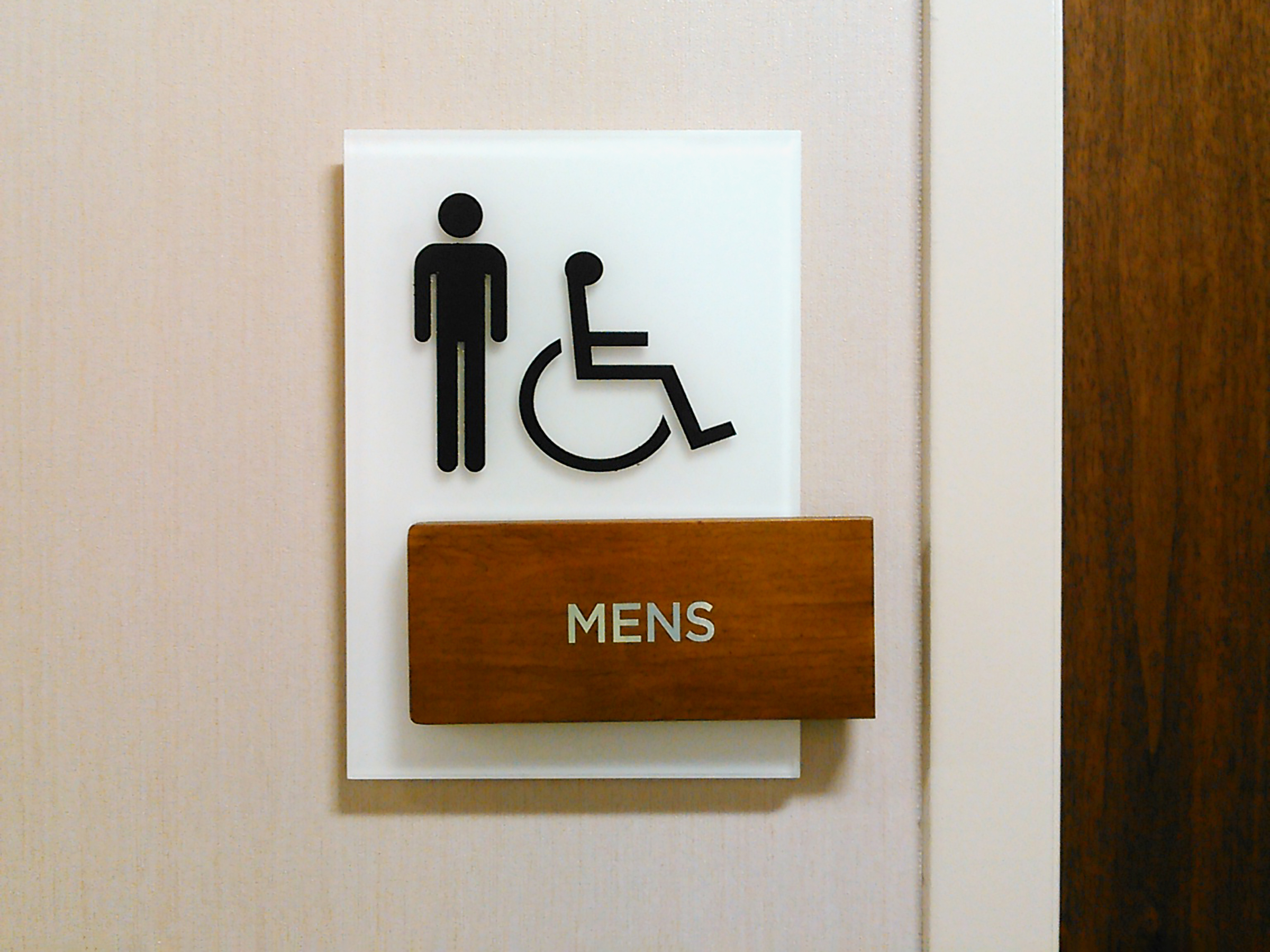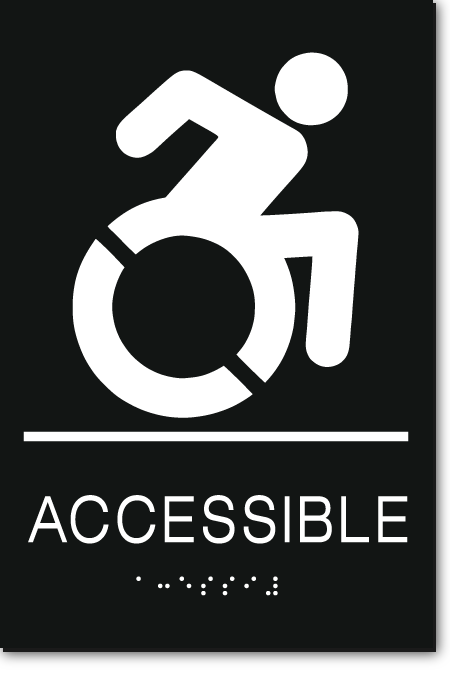The Role of ADA Signs in Complying with Access Requirements
The Role of ADA Signs in Complying with Access Requirements
Blog Article
Discovering the Trick Features of ADA Indications for Boosted Accessibility
In the realm of availability, ADA indicators offer as quiet yet effective allies, ensuring that spaces are accessible and inclusive for people with handicaps. By integrating Braille and tactile components, these indicators break barriers for the visually damaged, while high-contrast color plans and clear typefaces cater to varied aesthetic requirements.
Value of ADA Compliance
Ensuring compliance with the Americans with Disabilities Act (ADA) is crucial for cultivating inclusivity and equal access in public spaces and workplaces. The ADA, established in 1990, mandates that all public facilities, employers, and transport services fit individuals with impairments, ensuring they appreciate the exact same legal rights and possibilities as others. Compliance with ADA standards not only satisfies lawful responsibilities but additionally improves an organization's track record by demonstrating its commitment to variety and inclusivity.
One of the essential elements of ADA compliance is the execution of easily accessible signage. ADA indications are made to make certain that individuals with handicaps can quickly navigate via buildings and areas. These signs must abide by specific standards regarding size, font, color contrast, and positioning to guarantee visibility and readability for all. Properly executed ADA signs aids get rid of barriers that individuals with specials needs usually run into, therefore advertising their freedom and confidence (ADA Signs).
In addition, sticking to ADA regulations can mitigate the risk of lawful effects and possible fines. Organizations that fail to adhere to ADA standards might encounter charges or legal actions, which can be both monetarily burdensome and harmful to their public image. Thus, ADA compliance is essential to promoting a fair atmosphere for everybody.
Braille and Tactile Elements
The unification of Braille and tactile components into ADA signs personifies the concepts of access and inclusivity. These attributes are essential for people that are aesthetically damaged or blind, enabling them to navigate public rooms with higher freedom and self-confidence. Braille, a responsive writing system, is crucial in providing created info in a style that can be quickly viewed with touch. It is typically put under the equivalent text on signage to make sure that people can access the info without visual help.
Tactile aspects prolong past Braille and include increased personalities and icons. These parts are developed to be noticeable by touch, allowing people to identify space numbers, toilets, departures, and various other vital areas. The ADA sets certain standards pertaining to the dimension, spacing, and placement of these tactile elements to optimize readability and guarantee uniformity across different atmospheres.

High-Contrast Color Pattern
High-contrast shade schemes play a crucial function in improving the visibility and readability of ADA signage for individuals with visual problems. These systems are necessary as they make best use of the distinction in light reflectance in between text and background, making certain that indications are quickly discernible, also from a range. The Americans with Disabilities Act (ADA) mandates using particular color contrasts to accommodate those with restricted vision, making it a critical element of compliance.
The efficiency of high-contrast colors hinges on their capability to attract attention in numerous illumination problems, including poorly lit environments and locations with glow. Usually, dark text on a light history or light text on a dark background is employed to attain ideal comparison. As an example, black text on a yellow or white background supplies a plain aesthetic distinction that aids published here in fast recognition and comprehension.

Legible Fonts and Text Dimension
When taking into consideration the style of ADA signs, the option of readable typefaces and suitable text dimension can not be overstated. These components are crucial for making certain that indicators are easily accessible to people with visual disabilities. The Americans with Disabilities Act (ADA) mandates that fonts should be sans-serif and not italic, oblique, script, very decorative, or of unusual kind. These demands assist make sure that the text is quickly readable from a range which the personalities are distinct to diverse target markets.
The size of the message additionally plays an essential role in ease of access. According to ADA guidelines, the minimum text height must be 5/8 inch, and it must increase proportionally with checking out range. This is particularly crucial in public spaces where signage demands to be read swiftly and accurately. Consistency in message size adds to a cohesive aesthetic experience, helping individuals in browsing atmospheres effectively.
In addition, spacing in between lines and letters is important to legibility. Sufficient spacing prevents official source characters from appearing crowded, enhancing readability. By adhering to these standards, developers can significantly enhance availability, making certain that signage serves its desired purpose for all people, despite their aesthetic capabilities.
Reliable Placement Methods
Strategic positioning of ADA signage is crucial for optimizing availability and making certain compliance with legal standards. ADA guidelines specify that indicators should be installed at a height between 48 to 60 inches from the ground to ensure they are within the line of sight for both standing and seated people.
Furthermore, indicators have to be positioned nearby to the latch side of doors to permit easy recognition prior to entrance. Consistency in sign placement throughout a center improves predictability, minimizing complication and improving total user experience.

Final Thought
ADA signs play an essential function in promoting accessibility by incorporating attributes that deal with the requirements of individuals with handicaps. These aspects resource jointly foster an inclusive setting, emphasizing the importance of ADA compliance in making certain equal access for all.
In the realm of access, ADA indications serve as silent yet powerful allies, making sure that rooms are navigable and inclusive for people with impairments. The ADA, established in 1990, mandates that all public facilities, employers, and transportation solutions suit individuals with disabilities, guaranteeing they delight in the same legal rights and chances as others. ADA Signs. ADA indicators are made to make sure that people with disabilities can conveniently browse with areas and structures. ADA guidelines state that indications should be placed at an elevation in between 48 to 60 inches from the ground to ensure they are within the line of view for both standing and seated people.ADA indicators play a crucial role in advertising access by integrating features that deal with the requirements of individuals with handicaps
Report this page